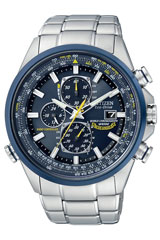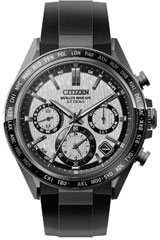Selection:
GPS Watches
GPS watches are special watches
GPS watches are special watches that are equipped with functions for navigation or route recording. This makes them ideal for outdoor use and for all those who love adventurers and outdoor fun. Hikers in particular can benefit from the functions of a GPS watch, because thanks to GPS positioning, the watch can be used all over the world. GPS watches can accurately record the distances traveled as well as the speed. The watches combine a fashionable look with high-tech at its best and can therefore meet every taste.GPS Watches - Guide GPS Watches
Always Stay Oriented
A GPS watch is a wristwatch that has an integrated GPS module. This watch receives signals from satellites to determine the exact position of the wearer. In addition to the time and date display, a GPS watch often offers features such as navigation, distance measurement, speed measurement, heart rate monitoring, and other fitness tracking tools. GPS watches are widely used by athletes and outdoor enthusiasts to accurately track and analyze their activities.
Table of contents
- What is a GPS watch & how does it work?
- What are the advantages of a GPS watch?
- What functions should a GPS watch have?
- GPS watch when hiking and camping
- The perfect outdoor watch!
- Conclusion
What is a GPS watch and how does it work?
A GPS watch is a wristwatch that has an integrated GPS module. This watch receives signals from satellites to determine the exact position of the wearer. The watch uses triangulation of signals from multiple satellites to determine the exact position of the wearer. The watch then uses algorithms to process this position information and provide various functions such as navigation, distance measurement, and speed measurement. The GPS watch is powered by an internal battery. The battery is usually a rechargeable lithium-ion battery. Some GPS watches also have solar panels that can charge the battery in sunlight. The technical workings of a GPS watch are complex, but in essence it works as follows:
- The GPS watch receives signals from several satellites orbiting the Earth.
- Each satellite continuously emits a signal that contains information such as its exact position and current time.
- The GPS watch receives these signals and calculates the distance to each satellite based on the time it took for the signal to travel from each satellite to the clock.
- Once the GPS watch knows the distance to at least four satellites, it can calculate the exact position of the wearer by combining the distance information with the position information of the satellites.
- The watch then uses algorithms to process this position information and provide various functions such as navigation, distance measurement, and speed measurement.
Overall, GPS technology allows for accurate tracking and analysis of activities and is very popular among athletes and outdoor enthusiasts.
What are the advantages of a GPS watch?
A GPS watch offers several advantages compared to traditional watches:
- Accuracy: A GPS watch uses satellite technology to determine the exact position of the wearer. This allows GPS watches to record the wearer's speed, distance and route very accurately.
- Training optimization: A GPS watch can be used during various activities such as running, cycling or swimming to record training data such as heart rate, pace, calories burned and distance. By analyzing this data, the wearer can optimize their training and improve their performance.
- Navigation: A GPS watch can also be used as a navigation device to guide the wearer on unfamiliar routes and help them find the right way. This can be especially useful when hiking, mountaineering or off-road.
- Convenience: A GPS watch can also be used as a traditional watch, so it provides a practical and convenient way to read the time and date.
What functions should a GPS watch have?
In addition to the basic functions such as determining position, speed and distance, there are other functions that a GPS watch can have. One of these features is heart rate measurement, where the GPS watch is equipped with a built-in heart rate monitor to measure and record the wearer's heart rate. A GPS watch can also have different modes for different sports such as running, cycling, swimming, hiking, skiing, etc., to collect and analyze specific training data. In addition, the GPS watch can also act as a music player and support the music control of smartphone apps so that the wearer can listen to music during exercise. Another function is the display of smartphone notifications such as calls, messages or calendar entries, so that the wearer is always up to date. A GPS watch should also be waterproof so that it can be used even when swimming or in rainy weather. In addition, a sufficiently long battery life is important to last even during longer workouts or excursions. The connectivity of the GPS watch is also an important aspect. A GPS watch can be connected to other devices such as smartphones or fitness apps to sync data or share workout results. Depending on individual needs and requirements, other functions such as NFC for contactless payment, barometric altimeters for use in the mountains or integrated maps for navigation may also be useful. Overall, a GPS watch offers many useful features that can help improve performance in sports, make navigation easier, and simplify everyday life.
GPS watch when hiking and camping
When hiking, a GPS watch can offer many benefits. A GPS watch can help the hiker determine their location and keep themselves on track. With the help of the integrated map and navigation functions, you can plan a route on the GPS watch and navigate through the terrain on the hike. This allows you to keep track of things even on difficult terrain or confusing paths. A GPS watch can also accurately record the distance traveled and thus track the route and analyze it later. This can be especially helpful if you are in unfamiliar terrain and want to remember or repeat a route. You can also measure speed and altitude, which can be especially helpful when hiking in the mountains. You can accurately record the distance traveled and the differences in altitude and thus monitor the progress of the hike.
The perfect outdoor watch!
A perfect outdoor watch should offer a range of features to meet the needs of outdoor enthusiasts. GPS is certainly one of the most important features, as it allows outdoor adventurers to pinpoint their position and find their way around unmarked trails and remote areas. With a GPS-enabled device, the watch can not only determine the position of the wearer, but also calculate important information such as speed, distance and altitude. These features are particularly useful for activities such as hiking, mountaineering, running or cycling, as they can help the user choose the right route, track distance and progress, and identify possible hazards such as inclines or slopes. A good outdoor watch should also be durable and sturdy to withstand the challenges of nature. This includes a waterproof construction, a scratch-resistant display, and long battery life. In addition, outdoor watches should be able to measure environmental conditions such as temperature, humidity, and barometric pressure to ensure the safety and comfort of the wearer. Other useful features for an outdoor watch could include a barometric altimeter, compass, pedometer, and heart rate measurement. These features can help the user optimize their performance, find the right direction, and keep an eye on their physical condition.
Conclusion
Overall, GPS watches are very handy and can be very helpful in outdoor activities. However, depending on the model, they can also be quite expensive. It is therefore important to consider the different functions and consider which functions are most important for your own needs.
Choose your preferred payment
You can choose the following payments from our shop: PayPal, credit card and prepayment. For more information visit payment methods & FAQ More payments: prepayment with 3% off for wristwatches
INFORMATION
Last update 2025-02-21 14:47:10







